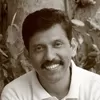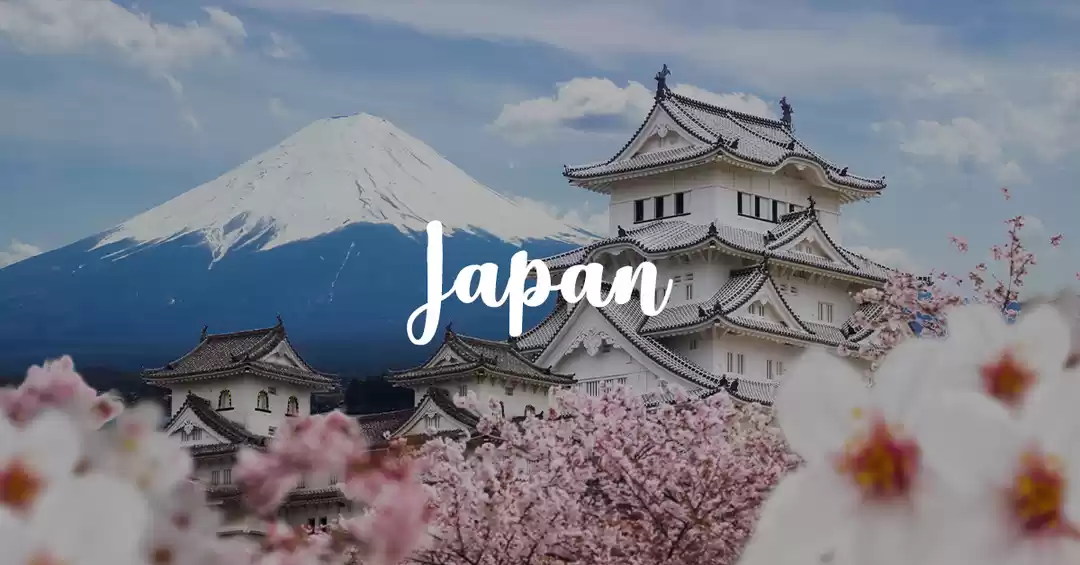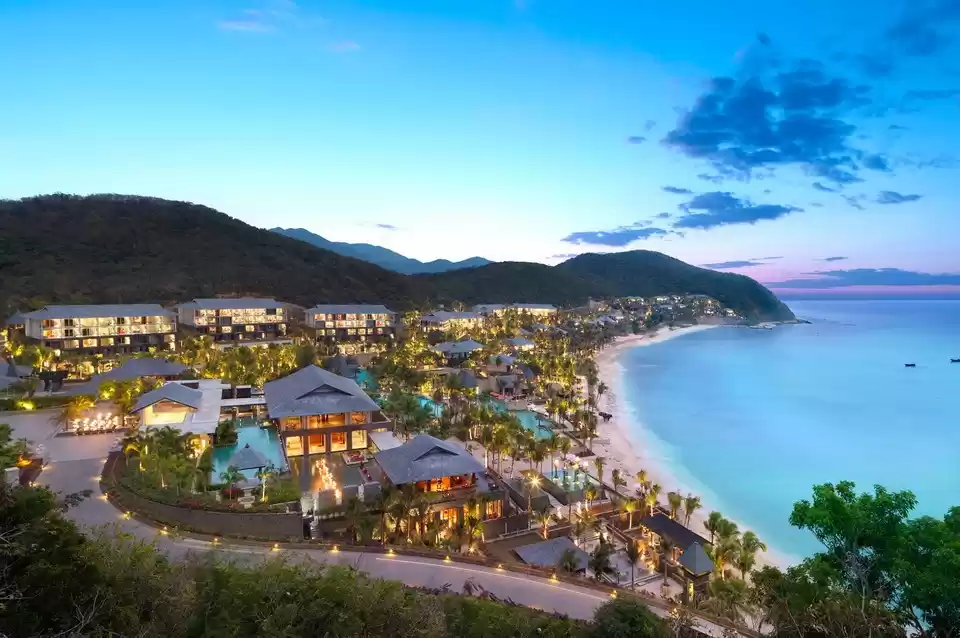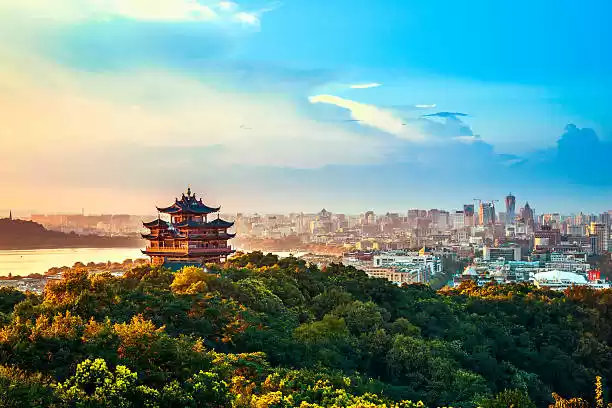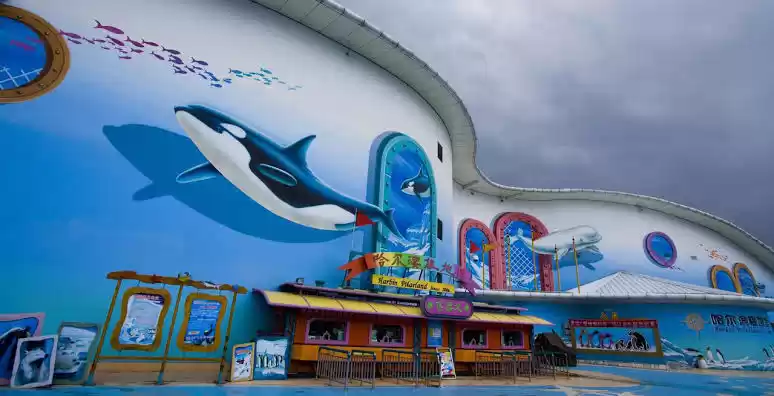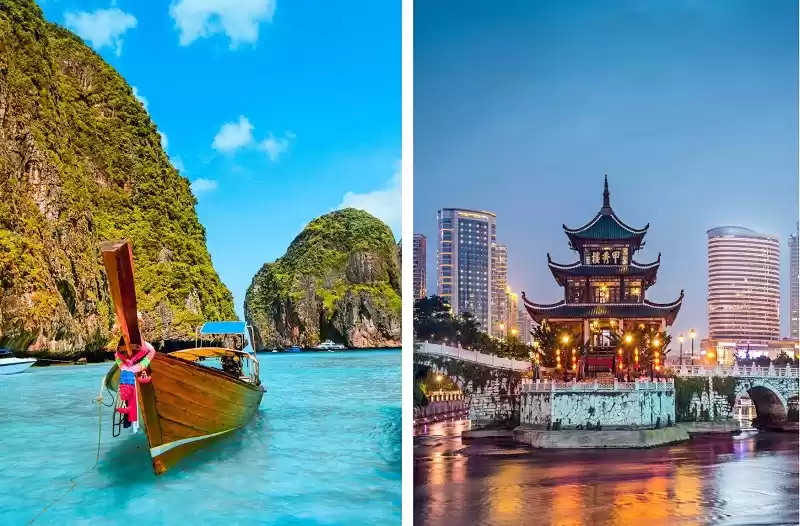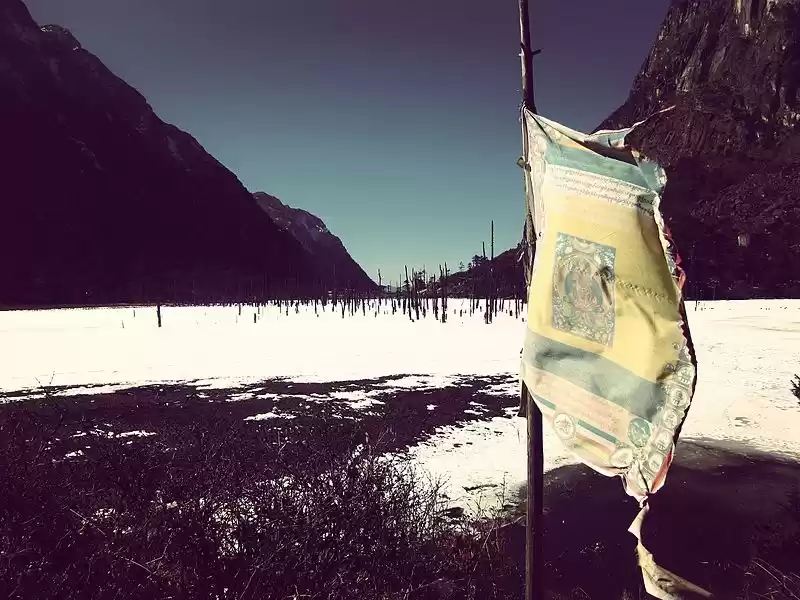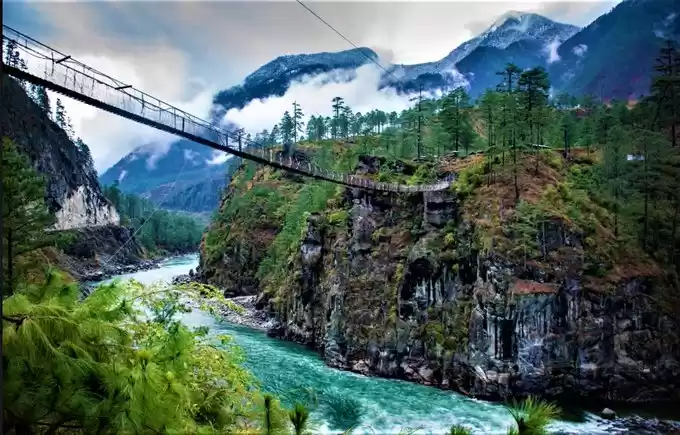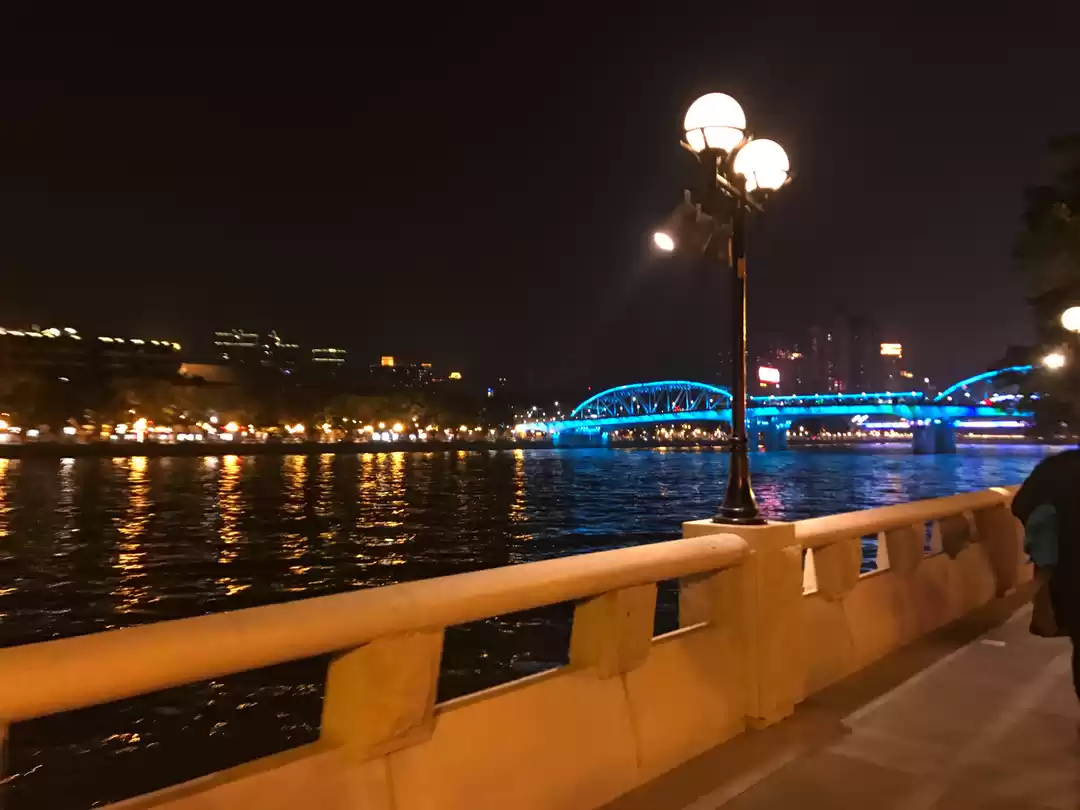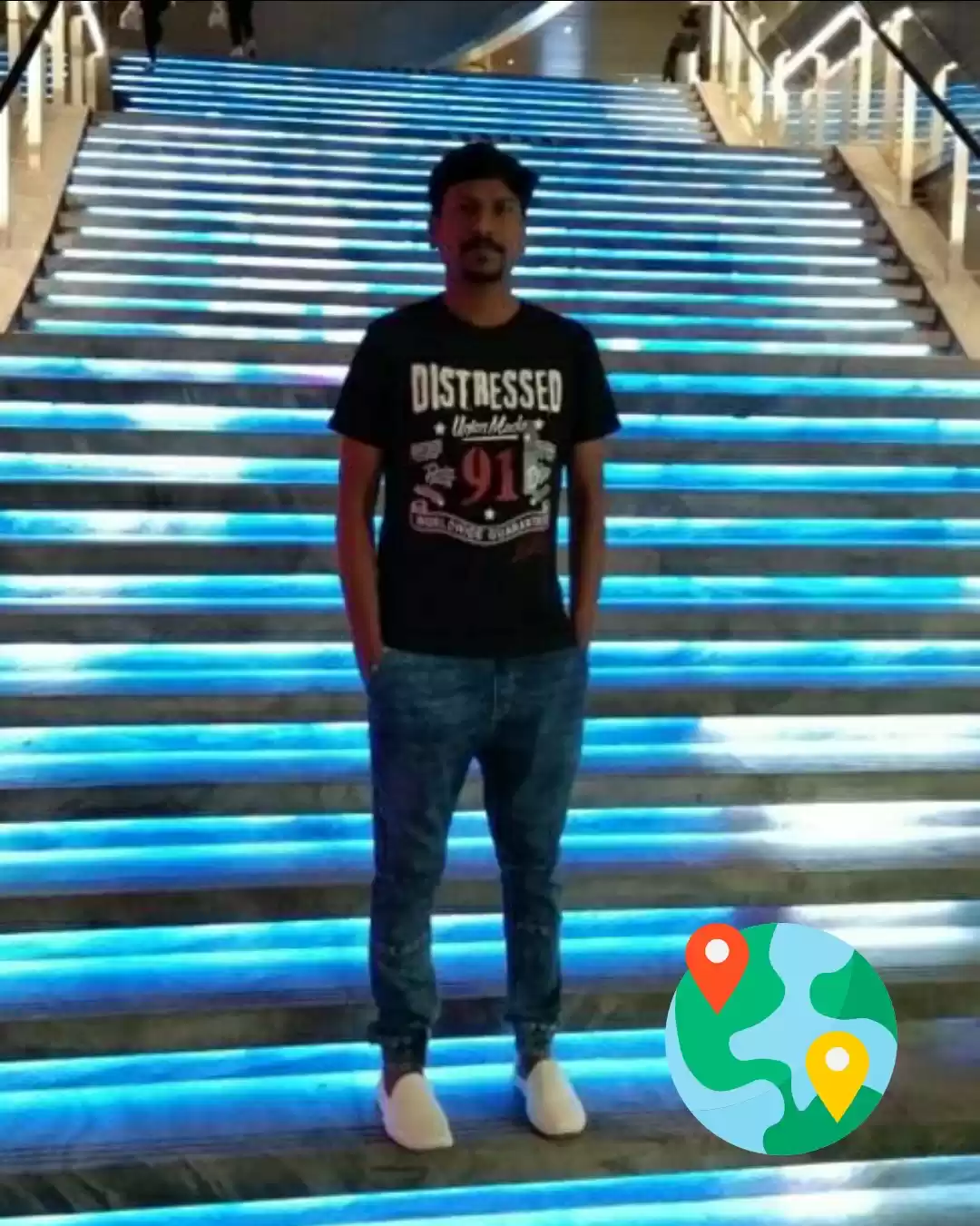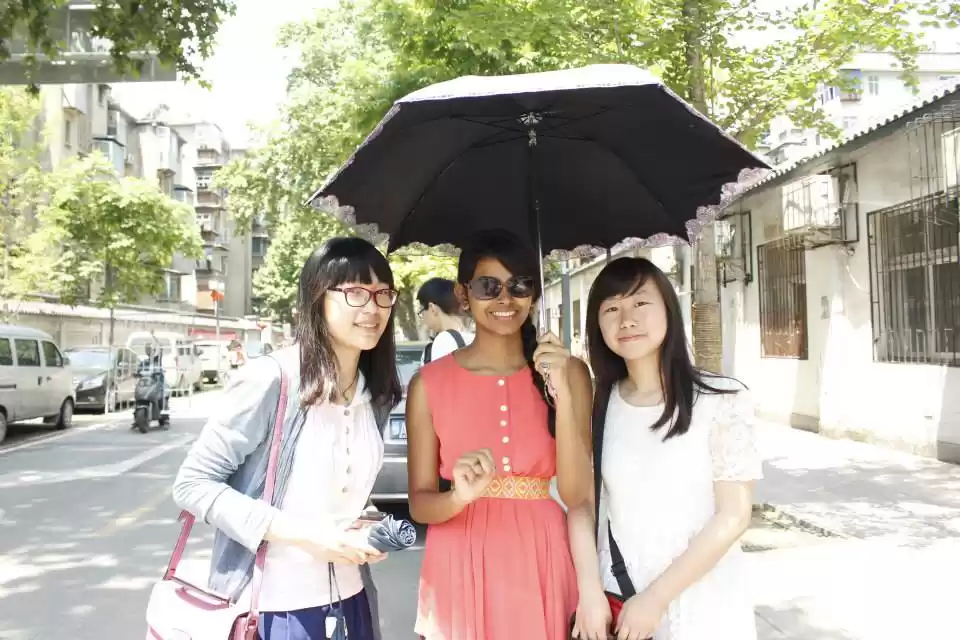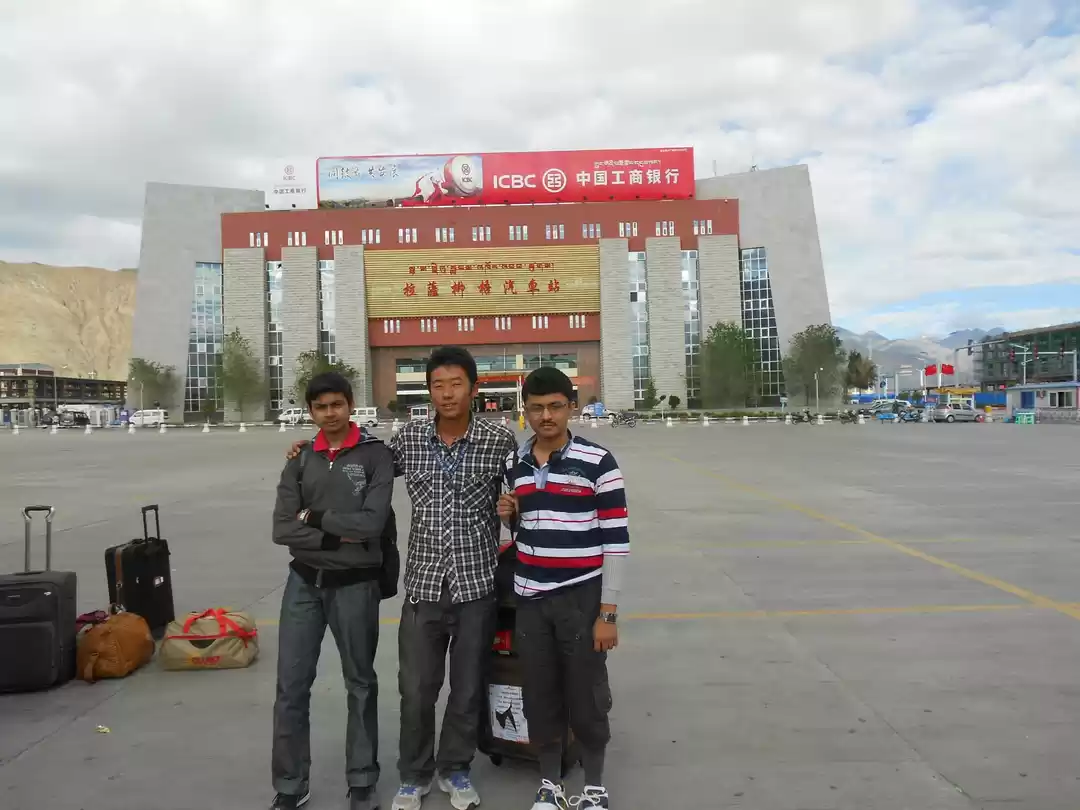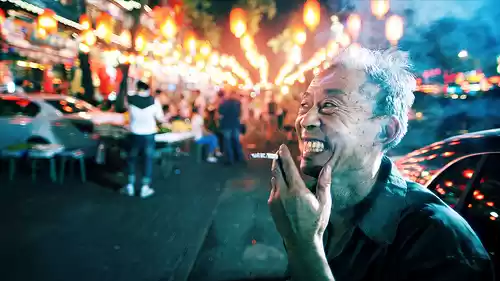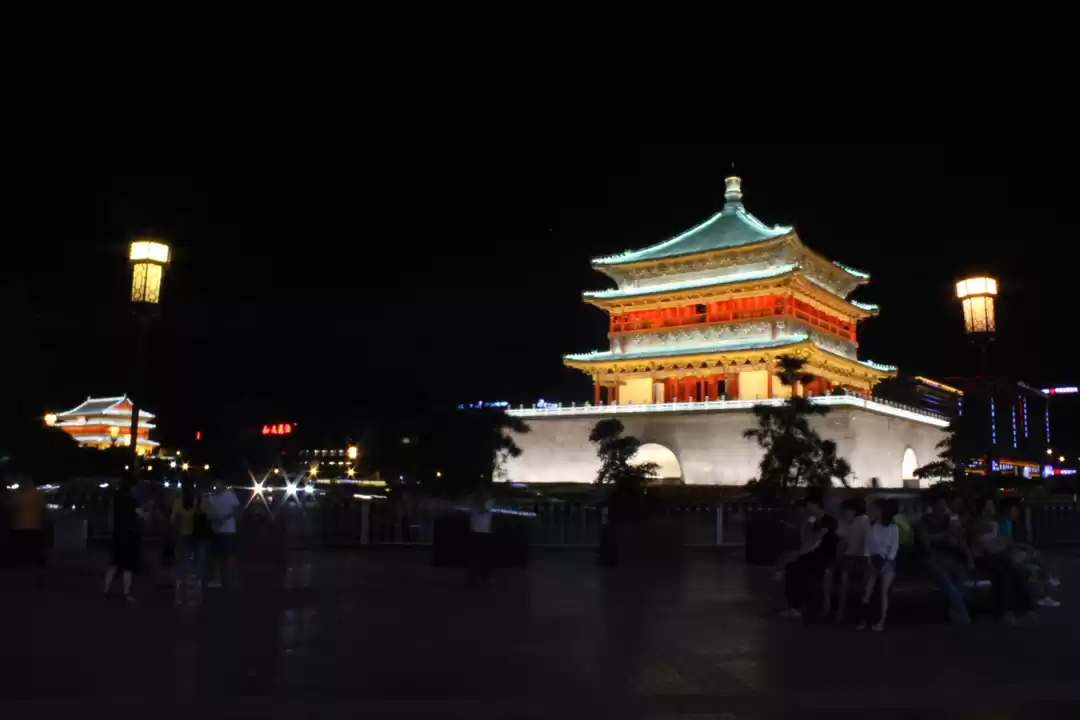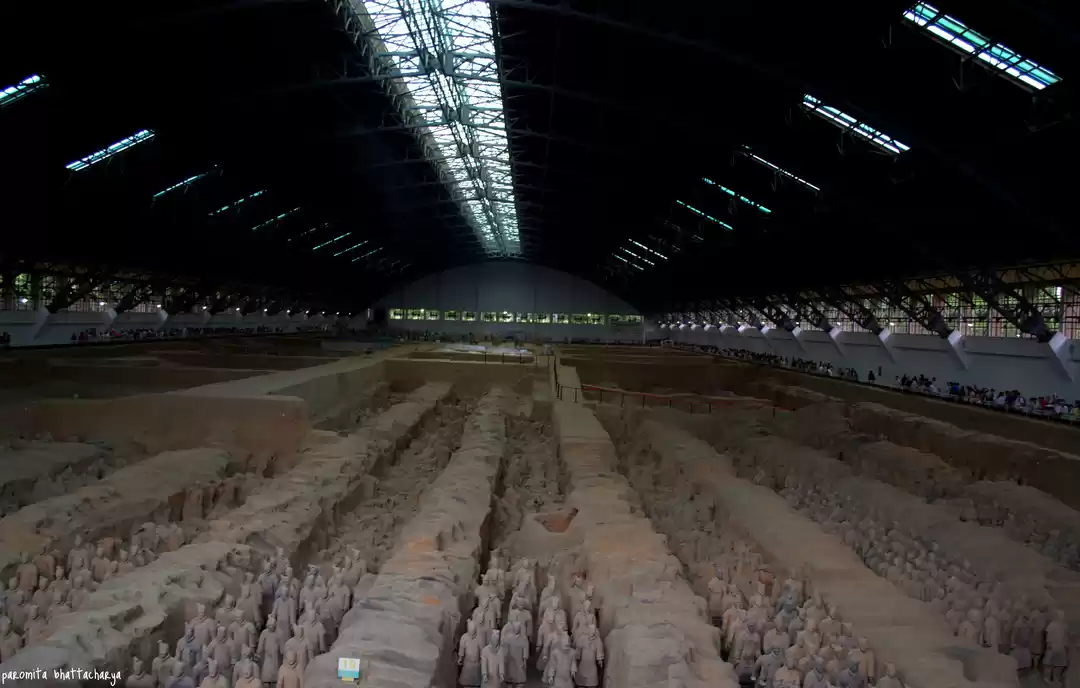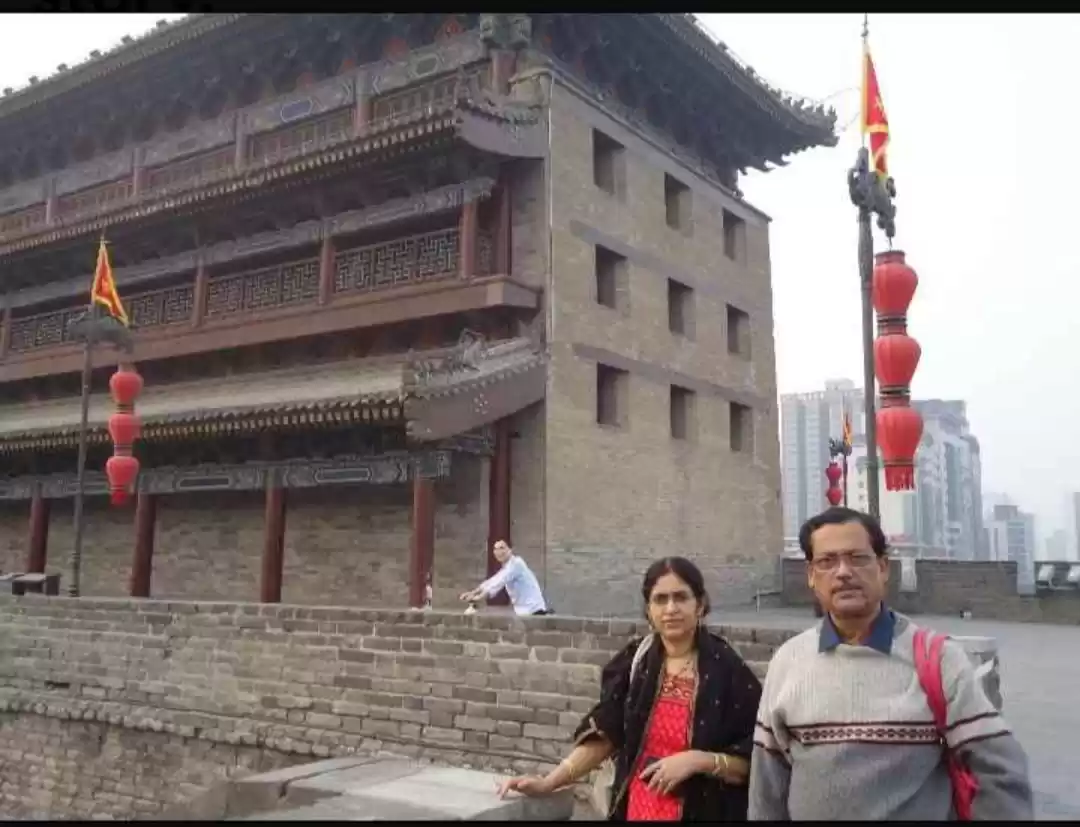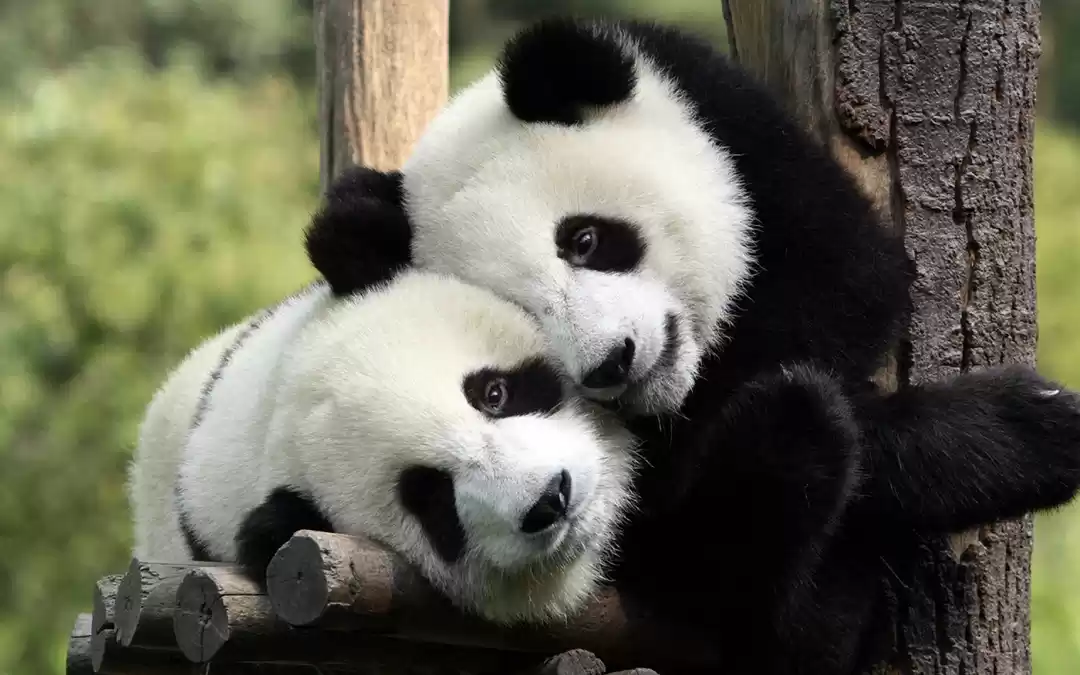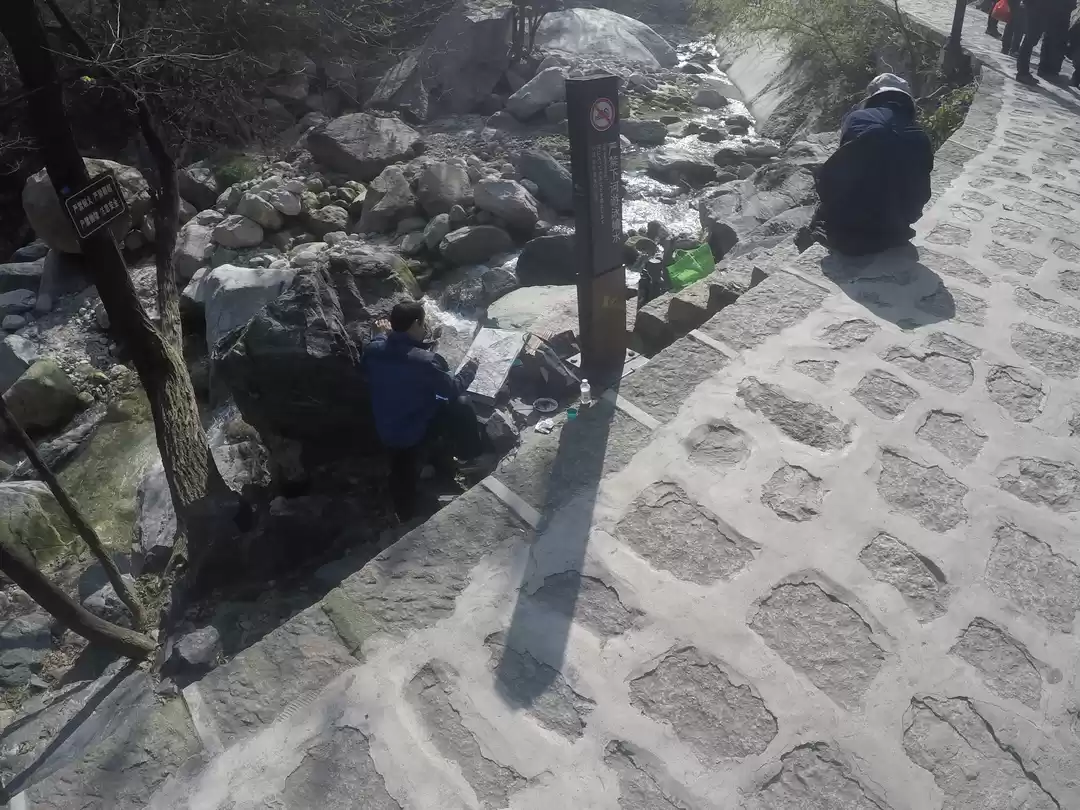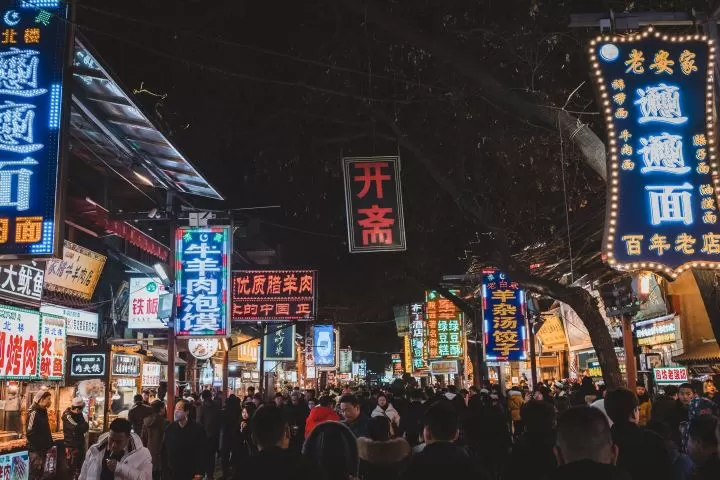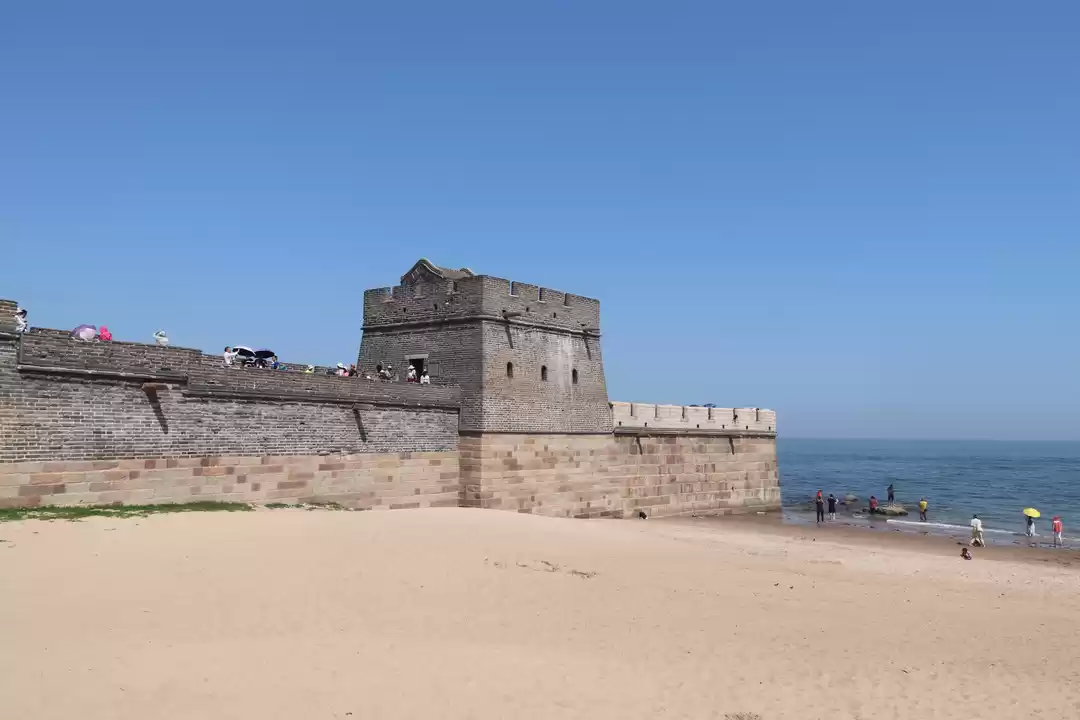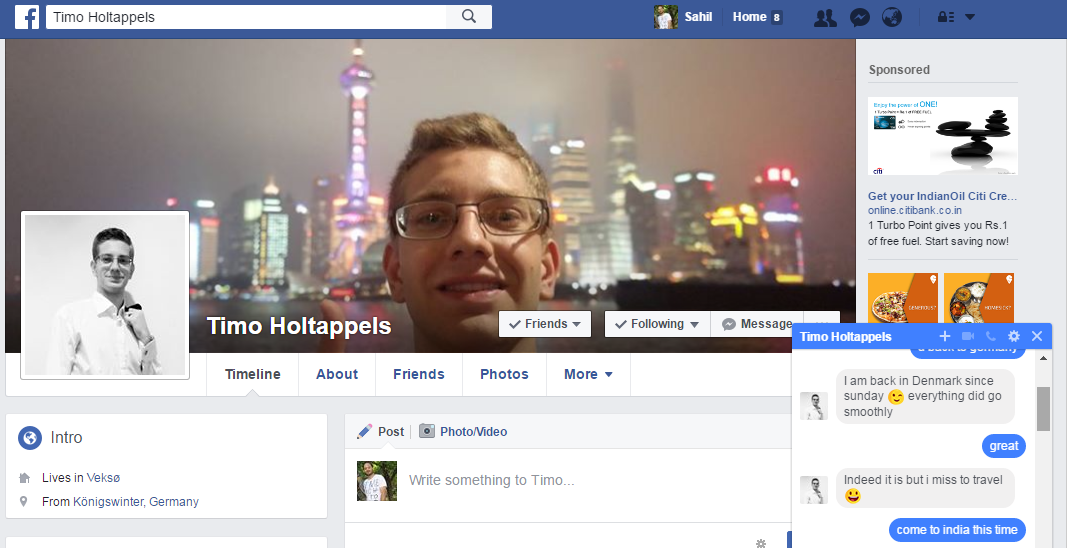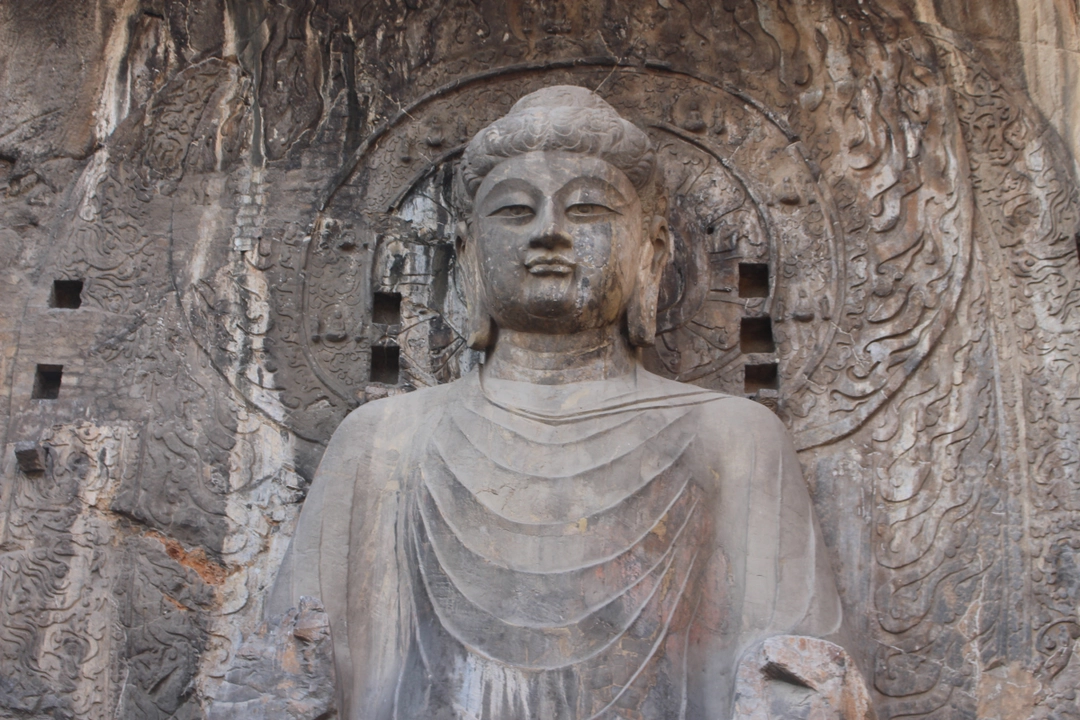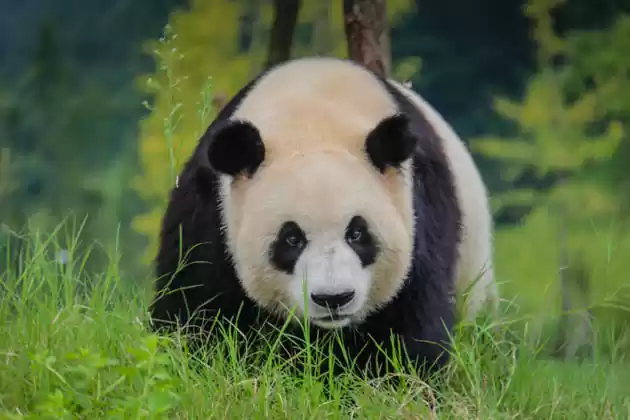
Xi'an (pronounced as Shian) has been on my bucket list for long and the opportunity came when I saw that FCN (Foreigners China, Laowai) had a weekend trip on 13-14 May 2017.
Xi'an is one of the oldest cities in China and is the capital of Shaanxi province. It has a very rich history. The Lantian Man was discovered in 1963, 50 km southeast of Xi'an, and dates back to at least 500,000 years before the present time. A 6,500-year-old Banpo Neolithic village was discovered in 1953 on the eastern outskirts of the city proper, which contains the remains of several well organized Neolithic settlements carbon dated to 5600-6700 years ago. The most significant finding was in 1974 when the Terracotta army was discovered.
Fifteen of us traveled by the regular train from Beijing to Xi'an on the evening of Friday, 12 th May 2017. It was a coupe while going and I had Andre in the same room. We reached Xi'an railway station at 8.00 am and walked to the hotel called youth hostel. The youth hostel itself is like a museum with so many antiques displayed. The rooms were old, but comfortable.
We freshened up and left for our first site, Shaanxi history museum. We had breakfast (vegetables and meat in a soup and fried bread) on the way in a small eatery. We were at the museum by 10.30am. Grace, our leader, got the tickets. The queue had fogging system for cooling. There were many hawkers selling ice candies and other things.
The Shaanxi history museum is regarded as "the pearl of ancient dynasties and house of Chinese treasures". It gives an indication of the thousands of years of Chinese history and the grand ancient cultures. The building itself is very impressive and the different halls have the relics from prehistoric to the different dynasties that ruled China. The main artefacts are from the Zhou, Qin, Han and Tang dynasties. The items are well preserved and well presented. The museum shop also has a great collection to offer. After the museum, we walked to the Big Wild Goose Pagoda (Dayan Pagoda). The street had interesting bronze sculptures including that of Statue of Lady Gongsun, a sword-dance master of the Tang Dynasty.








As the symbol of the ancient Xian, Big Wild Goose Pagoda (also called Giant Wild Goose Pagoda) is a well-preserved heritage building and is a holy place for Buddhists. Originally built in 652 during the reign of Emperor Gaozong of the Tang Dynasty (618-907), it functioned to collect Buddhist materials that were taken from India by Xuanzang ( Hsüan-tsang).



Xuanzang started off from Chang'an (the ancient Xian), along the Silk Road and through deserts, finally arriving in India, the cradle of Buddhism. Enduring 17 years and traversing 100 countries, he obtained Buddha figures, 657 kinds of sutras, and several Buddha relics. With the permission of Emperor Gaozong (628-683), Xuanzang, as the first abbot (monk superior) of Da ci'en Temple, supervised the building of a pagoda inside it. With the support of the emperor, he asked 50 disciples into the temple to translate Sanskrit in sutras into Chinese, totaling 1,335 volumes, which heralded a new era in the history of translation. Based on the journey to India, he also wrote a book entitled 'Journey to the West (西遊記)' in the Tang Dynasty, to which scholars have given great importance.
While the team went around the site, I bought entry ticket to the pagoda and climbed the seven stories. Each level has different artefacts and windows to view of all four sides. The view from the top is amazing and showcases the beautiful town planning of the surrounding areas. On the walls are engraved fine statues of Buddha by the renowned artist Yan Liben of the Tang Dynasty. Steles by noted calligraphers also grace the pagoda.
There is a legend for why it is called Big Wild Goose Pagoda. According to ancient stories of Buddhists, there were two branches, for one of which eating meat was not a taboo. One day, they couldn't find meat to buy. Upon seeing a group of big wild geese flying by, a monk said to himself: 'Today we have no meat. I hope the merciful Bodhisattva will give us some.' At that very moment, the leading wild goose broke its wings and fell to the ground. All the monks were startled and believed that Bodhisattva showed his spirit to order them to be more pious. They established a pagoda where the wild goose fell and stopped eating meat. Thus the pagoda was known as Wild Goose Pagoda. In the complex is the big Da ci'en temple built in 648 to remember the dead queen. The Buddha statues are very beautiful and so are the other carvings. The temple complex has a huge bell tower and a Gong. The complex also has beautiful garden. There is a large shop that sells Buddhist artefacts.












Workers digging a well outside the city of Xi'an, China, in 1974 struck upon one of the greatest archaeological discoveries in the world: a life-size clay soldier poised for battle. The diggers notified Chinese authorities, who dispatched government archaeologists to the site. They found not one, but thousands of clay soldiers, each with unique facial expressions and positioned according to rank. And though largely gray today, patches of paint hint at once brightly colored clothes. Further excavations have revealed swords, arrow tips, and other weapons, many in pristine condition. The soldiers are in trenchlike, underground corridors. In some of the corridors, clay horses are aligned four abreast; behind them are wooden chariots. The terra-cotta army, as it is known, is part of an elaborate mausoleum created to accompany the first emperor of China into the afterlife, according to archaeologists. YOUNG EMPEROR Ying Zheng took the throne in 246 B.C. at the age of 13. By 221 B.C. he had unified a collection of warring kingdoms and took the name of Qin Shi Huang Di-the First Emperor of Qin. During his rule, Qin standardized coins, weights, and measures; interlinked the states with canals and roads; and is credited for building the first version of the Great Wall. According to writings of court historian Siam Qian during the following Han dynasty, Qin ordered the mausoleum's construction shortly after taking the throne. More than 700,000 laborers worked on the project, which was halted in 209 B.C. amid uprisings a year after Qin's death. To date, four pits have been partially excavated. Three are filled with the terra-cotta soldiers, horse-drawn chariots, and weapons. The fourth pit is empty, a testament to the original unfinished construction. Archaeologists estimate the pits may contain as many as 8,000 figures, but the total may never be known. UNEXCAVATED TOMB Qin's tomb itself remains unexcavated, though Siam Qian's writings suggest even greater treasures. "The tomb was filled with models of palaces, pavilions and offices as well as fine vessels, precious stones and rarities," reads a translation of the text. The account indicates the tomb contains replicas of the area's rivers and streams made with mercury flowing to the sea through hills and mountains of bronze. Precious stones such as pearls are said to represent the sun, moon, and other stars. Modern tests on the tomb mound have revealed unusually high concentrations of mercury, lending credence to at least some of the historical account. Chinese archaeologists are also using remote-sensing technology to probe the tomb mound. The technique recently revealed an underground chamber with four stairlike walls. An archaeologist working on the site told the Chinese press that the chamber may have been built for the soul of the emperor. Experimental pits dug around the tomb have revealed dancers, musicians, and acrobats full of life and caught in mid-performance, a sharp contrast to the military poses of the famous terra-cotta soldiers. But further excavations of the tomb itself are on hold, at least for now.




When the First Emperor ascended the throne, the digging and preparation at Mount Li began. After he unified his empire, 700,000 men were sent there from all over his empire. They dug down deep to underground springs, pouring copper to place the outer casing of the coffin. Palaces and viewing towers housing a hundred officials were built and filled with treasures and rare artifacts. Workmen were instructed to make automatic crossbows primed to shoot at intruders. Mercury was used to simulate the hundred rivers, the Yangtze and Yellow River, and the great sea, and set to flow mechanically. Above, the heaven is depicted, below, the geographical features of the land. Candles were made of "mermaid"'s fat which is calculated to burn and not extinguish for a long time. The Second Emperor said: "It is inappropriate for the wives of the late emperor who have no sons to be free", ordered that they should accompany the dead, and a great many died. After the burial, it was suggested that it would be a serious breach if the craftsmen who constructed the tomb and knew of its treasure were to divulge those secrets. Therefore, after the funeral ceremonies had completed, the inner passages and doorways were blocked, and the exit sealed, immediately trapping the workers and craftsmen inside. None could escape. Trees and vegetation were then planted on the tomb mound such that it resembled a hill.






In the entrance of the pagoda is a large statue of Xuanzang, commemorating his immense contribution to understanding India and Buddhism. On the way back, I bought a large painting of Buddha done on felt like cloth from the street.
We took the subway to out next destination, the Xi'an city wall. We were there in about half an hour. Xian City Wall is the most complete city wall that has survived in China, as well being one of the largest ancient military defensive systems in the world. When Zhu Yuanzhang, the first Emperor of the Ming Dynasty (1368-1644), captured Huizhou, a monk named Zhu Sheng advised him that he should 'build high walls, store enough food supplies and take time to be an Emperor,' so that he could fortify the city and unify the other states. After the establishment of the Ming dynasty, Zhu Yuanzhang followed his advice and began to enlarge the wall built initially during the old Tang Dynasty (618 - 907), forming today's Xian City Wall. The wall now is 12 meters tall, 12-14 meters wide at the top and 15-18 meters thick at the bottom. It is 13.7 kilometers long with a deep moat surrounding it.
We went up the wall and took many pictures. I tried the bicycle ride. The wall also holds plays and operas and that day they were going to have one. After spending about 2 hours there, we took two taxis and went to the Beiyuanmen Muslim street.
The Beiyuanmen Muslim street is a wonderful area full of food and life. It is said that in the past, foreign diplomatic envoys and merchants lived here. Then they married and had children, so gradually the population increased. Today, most of the residents here are the descendants of those immigrants. All the Muslims here are the devout followers of Islam and form a tight knit community, which maintains its own culture and traditions. They all know each other as they were childhood friends.
The variety of food and snacks on the street was amazing. Grace, Andre and I stayed together and went around trying different things. The whole atmosphere was festive and electrifying with so many people trying out variety of snacks and handicrafts. Andre enjoyed eating the barbecue crabs and I devoured some barbecue lamb. This street also had a Bangaldeshi artist showcasing the Arabic sand art and he happened to be the brother of one I met at Chengdu. We roamed around the Muslim street till 10pm and caught taxis back to the hotel. I joined the hotel owner and few others for beer that night. It was interesting to note that the young owner was an avid art collector who was very knowledgeable about antiques.
Next morning, we left around 7.30am, had breakfast on the way and took a public transport bus to reach the place where the terracotta army museum is located. It was a good two hours journey and we got down at the last stop. It was a rainy day. Grace got the tickets. Andre and I wanted to have a guide to get the best out of the place and hired an English speaking guide for 200 RMB. She was very good. She explained the exhibits well and clarified our doubts. It was a rainy day and she said it was manufactured rain to cool down the place.
The terracotta army museum is at the foothill of Li Mountain (Lishan). For authenticity, I am quoting the National Geographic here:
Further details about the history can be read here: http://news.nationalgeographic.com/2016/10/china-first-emperor-terra-cotta-warriors-tomb/
It was an overwhelming experience to witness a unique part of the world history. One might wonder why these were made. It is a form of funerary art buried with the emperor in 210-209 BCE and whose purpose was to protect the emperor in his afterlife. The warriors were supposed to be copied from real soldiers and the height is based on the rank. Other features also indicate their rank. The figures were colored when they were made.
A translation from the Chinese, Sima Qian Shiji volume 6 reads:
There is also lot of reconstruction work going on. The warriors and the horses are rebuilt with many broken pieces. The museum also showcases the technology that was used in daily life and machines that were used 2000 years ago. The street behind the museum sold skins of many wild animals.
We left the place in the afternoon and returned to the hotel to pick our bags and go to the railway station. Unlike the onward journey, the return had a hard bed sleeper. As one of my teammates wanted to be with her friend, I changed the coach. Sady, one of my teammate, was there and introduced me to some new friends. I had an instant connect with Gogo. Thanks to FCN for the opportunity to visit Xi'an. Once again, Grace was excellent in organizing and leading the trip.
I reached Beijing the next morning with fond memories of the Xi'an tour.

